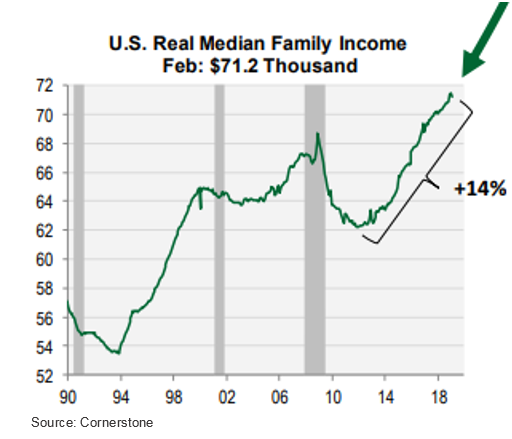Get the Edge - Click here to view an archive of investment education, daily musings, book recommendations and more.
_________________
Full video and highlights - Berkshire's annual meeting (Link)
Buffet on the advantage of volatility. “The nature of markets is that things get overpriced and things get underpriced. And when things get underpriced, we’ll take advantage of it.”
Munger on the best philosophy in life. "If you want one mantra, it’s from a gentleman who just died, Lee Kuan Yew who said - Figure out what works and do it.” Under decades of Lee Kuan Yew’s leadership, Singapore transformed itself from a British outpost into a global trade and finance giant.
Buffet on finding a balance between saving and enjoyment. “I don’t necessarily think that for all families in all circumstances, saving money is necessarily the best thing to do. I think there’s a lot to be said for doing things that bring your family enjoyment rather than trying to save every dime. If you can’t be happy with 50 thousand or 100 thousand, you won’t be happy with 50 million.”
Buffets thoughts on socialism.“I’m a card-carrying capitalist. I also think capitalism does involve regulation. It involves taking care of people who are left behind.”
Munger on finding your specialty. “Not everybody can learn everything. No matter how hard you try, there is always some guy or girl who achieves more. My attitude is, so what? Do any of us need to be at the very top of the whole world? It’s ridiculous."
Buffet on the competitive investment field. “It is much more competitive now than when I started. I would do a whole lot of reading about many businesses and figure out on which ones I had some important knowledge and understanding that was different from most of my competitors. And I would try to figure out which companies I didn’t understand. It’s still an interesting game but it’s harder than it used to be.”
Buffet on finding the right partners in life. “Having the right partners in life, particularly the right spouse, is enormously important. It’s more fun and you get more accomplished too. You just have a better time. I recommend finding the best person who will have you.”
Buffet on the advantage of volatility. “The nature of markets is that things get overpriced and things get underpriced. And when things get underpriced, we’ll take advantage of it.”
Munger on the best philosophy in life. "If you want one mantra, it’s from a gentleman who just died, Lee Kuan Yew who said - Figure out what works and do it.” Under decades of Lee Kuan Yew’s leadership, Singapore transformed itself from a British outpost into a global trade and finance giant.
Buffet on finding a balance between saving and enjoyment. “I don’t necessarily think that for all families in all circumstances, saving money is necessarily the best thing to do. I think there’s a lot to be said for doing things that bring your family enjoyment rather than trying to save every dime. If you can’t be happy with 50 thousand or 100 thousand, you won’t be happy with 50 million.”
Buffets thoughts on socialism.“I’m a card-carrying capitalist. I also think capitalism does involve regulation. It involves taking care of people who are left behind.”
Munger on finding your specialty. “Not everybody can learn everything. No matter how hard you try, there is always some guy or girl who achieves more. My attitude is, so what? Do any of us need to be at the very top of the whole world? It’s ridiculous."
Buffet on the competitive investment field. “It is much more competitive now than when I started. I would do a whole lot of reading about many businesses and figure out on which ones I had some important knowledge and understanding that was different from most of my competitors. And I would try to figure out which companies I didn’t understand. It’s still an interesting game but it’s harder than it used to be.”
Buffet on finding the right partners in life. “Having the right partners in life, particularly the right spouse, is enormously important. It’s more fun and you get more accomplished too. You just have a better time. I recommend finding the best person who will have you.”
Charlie Munger designs college dorms (Link)
Charlie Munger donates hundreds of millions of dollars toward buildings at major universities and institutions but these generous donations come with one caveat. The universities that want his money have to accept his ideas on building designs and Mr. Munger is not your traditional designer.
He’s interested in the nuts and bolts and not aesthetic design. He dislikes curves, wasted space, shared bedrooms and bad acoustics. He likes using precast concrete and putting hallways and staircases on the outside of buildings.
He’s interested in the nuts and bolts and not aesthetic design. He dislikes curves, wasted space, shared bedrooms and bad acoustics. He likes using precast concrete and putting hallways and staircases on the outside of buildings.
He also likes anticipating how a building could be used differently in decades to come. Some are shocked at Mr. Munger’s ability to see into the future. For example, Mr. Munger designed Harvard-Westlake’s middle-school library, which opened in 2008, with several computer rooms. Munger insisted the computer rooms be made with removable walls. When students later switched to laptops, the computer rooms were easily converted for other uses. There are many other cases just like this.

















